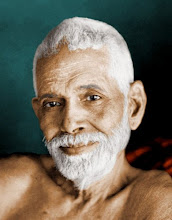In this week’s featured audio, Gabriel Nossovitch asks: if who we are is empty, formless ground, why should we do anything about the world of form? Why should we care about the evolution of consciousness or awareness? Why should we pay attention to the impulse to awaken others? After enlightenment, what’s the point?
Ken Wilber points out that this is actually a very old paradox, a sort of koan through the ages, which usually goes something like this: “There are no others to save; therefore I vow to save them all.” Gabriel’s question comes after ten years of deep practice; most people who’ve had a taste of satori eventually come to the same question.
Taking an Integral view of the evolution of enlightenment can be very helpful here. As has been often noted, spiritual practice seems to have the universal purpose of fostering states of consciousness. While the practices vary by tradition, the states themselves are remarkably similar, East and West. Both Vedanta and Vajrayana, for instance, posit five distinct states. The first three states are gross, subtle, and causal, all associated with the world of form. The fourth state, turiya (literally, Sanskrit for “fourth”) is the Witness of all form. Whereas the first three states (all experienced in the Upper-Left quadrant) all have corresponding energetic bodies (in the Upper-Right quadrant), the fourth state is associated with the space in which everything arises. The traditions birthed during the great Axial age (800-200 BCE) tended to have this state as their endpoint. Their practices usually involved witnessing all objects until attachment itself was exhausted, and grasping and identification dehydrated. And at that endpoint, radical, infinite, intelligent darkness, subtle bliss, Nirvana….
Of course, consciousness—and with it, enlightenment—continued to evolve. Led by Plotinus in the West and Nagarjuna in the East, the growing tip of consciousness pushed through turiya to a fifth state, turiyatita (literally, “beyond fourth”). This is the classic nondual state, in which the Witness merges with everything witnessed. The Heart Sutra says it beautifully:
That which is form is not other than Emptiness;
That which is Emptiness is not other than form;
Or, from Vedanta:
The world is illusory
Brahman alone is real
The world is Brahman
In these paths, what arises is seen not as a distraction, but rather, as an ornament, and not as deficiency, but as abundance. As Gabriel puts it, “let form be forming.” And that is precisely the reason to come back. If enlightenment is indeed the nondual union of the Absolute and the relative, then of course, in an Absolute sense, nothing needs to be done. But in a relative sense (and the nondual transcends and includes the relative!), there are countless sentient beings living in a nightmare. We are given this precious human birth, and there is more to be done than we possibly can do in this precious human lifetime. Or, as Jack Kornfield memorably put it, “after the ecstasy, the laundry….”



No comments:
Post a Comment